| Columns Retired Columns & Blogs |
Thank you Jason,
This art song piece was beautifully written, inspiring (I am listening to Sandrine Piau now), and well-sorted content-wise BRAVO!
your biggest fan,
herb
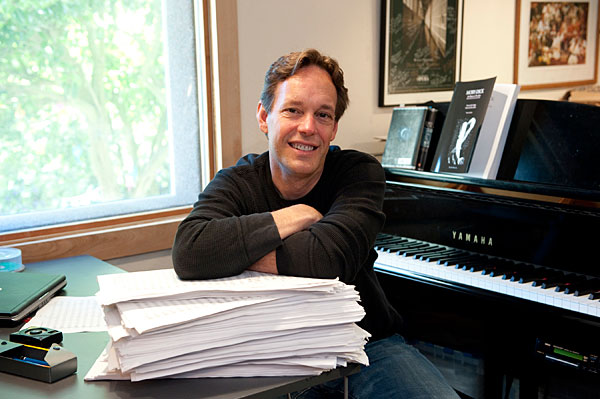
American song of our time
While the American art song tradition is easily traceable back to the 19th century, the 20th century saw a major flowering of American repertoire from composers including Aaron Copland and Ned Rorem. In our current time, perhaps no American composer has excelled more than Jake Heggie. Were I to pick just one contemporary song album, it would be 2020's sensational Jake Heggie: Unexpected Shadows, on which Heggie and cellist Matt Haimovitz accompany the larger-than-life mezzo, Jamie Barton. Barton's rendition of the five-song cycle Statuesque must be heard. I'd also urge you to check out Passing By: Songs by Jake Heggie and the early The Faces of Love: The Songs of Jake Heggie. Heggie has been championed by some of the greatest singers of our time, for good reason.
My faves
Superb recordings of great songs can do more to convert someone to the wonders of art song than any number of treatises like this one. One of the beauties of art song is that every fan finds something different to love. Hence, we close with an impartial and incomplete list of very personal recommendations.
• Fernando Obradors: "Del cabello más sutil" (Of the softest hair)—Arleen Auger, soprano/Dalton Baldwin, piano. Conductor Simon Rattle once said of Auger that her singing could make time stand still. For two unforgettable examples of same, listen to her miraculous floated descent in the song's final verse, and enjoy more in her rendition of "Azulão." Auger began her career as a light, high soprano and matured into one of the more heartfelt and direct singers of the latter 20th century. Disliking the politics of the opera house, she spent most of her time in song and oratorio, making hundreds of recordings. Love Songs is musically superb and a great example of what the late engineer John Eargle achieved in the early years of digital.
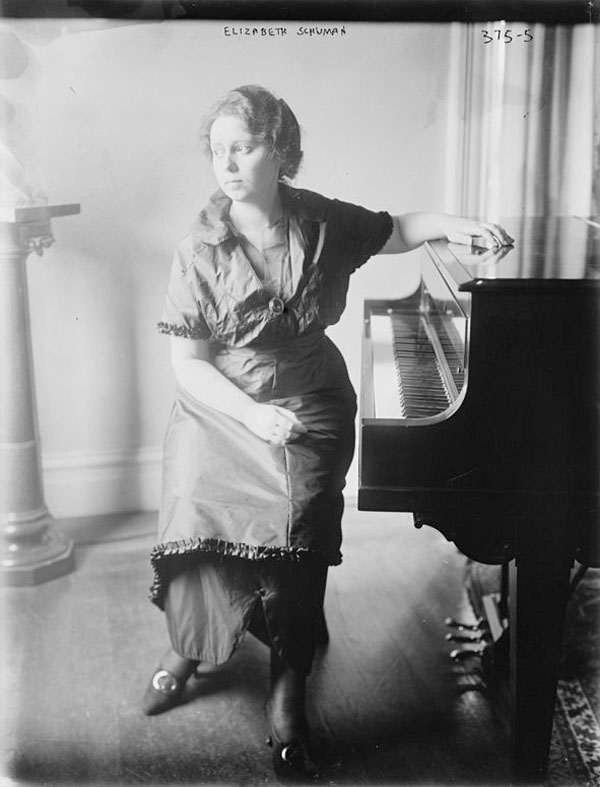
• Schubert: "Das Hirt auf dem Felsen" (The Shepherd on the Rock)—Elisabeth Schumann, soprano/Reginald Kell, clarinet & George Reeves, piano. Schumann is the only soprano I know who could seamlessly descend from a high note as if her voice was a feather, gently floating downward. She was also one of surprisingly few great singers who could easily transition from genuinely felt sadness and grief to boundless joy. (Cecilia Bartoli is another.)
In one of Schubert's final songs, here abridged due to space considerations, enjoy the high-voiced lightness and charm of a treasurable artist who, though past her prime and diminished in volume and shine, can still channel golden light through her voice. Remain on this album for "Die Vögel" (The Birds), "Du bist die Ruh" (You are repose), and "Heidenröslein" (The Wild Rose), accompanied by Karl Alwin, Schumann's husband. Alwin may not have been the greatest pianist in the world, but their recordings together capture Schumann's Schubert and Strauss during her prime. Has anyone ever chirped the high notes of birds more adorably, sung songs of devotion with such tenderness, or sung about a wild rose with such delight? Keep listening to her Schubert, because her truncated "Ave Maria" with orchestra provides a benchmark.
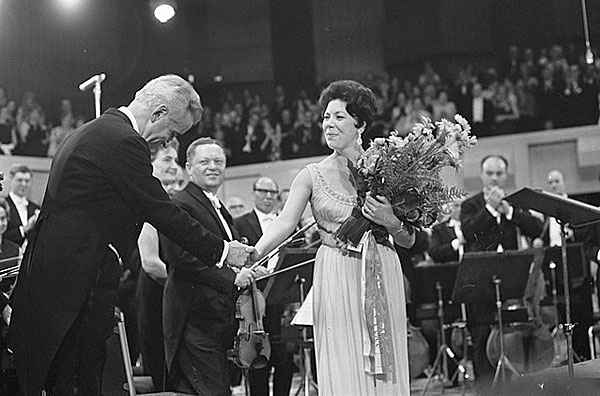
• Schubert: "Ave Maria"—Janet Baker, mezzo-soprano/Moore, piano. Janet Baker maintained a tradition of holy stillness and fervent devotion exemplified by British contralto Kathleen Ferrier and continued by the great American mezzo Lorraine Hunt Lieberson. Everything you need to know about sincerely voiced prayer is here. Note the potency of Baker's soft tones.
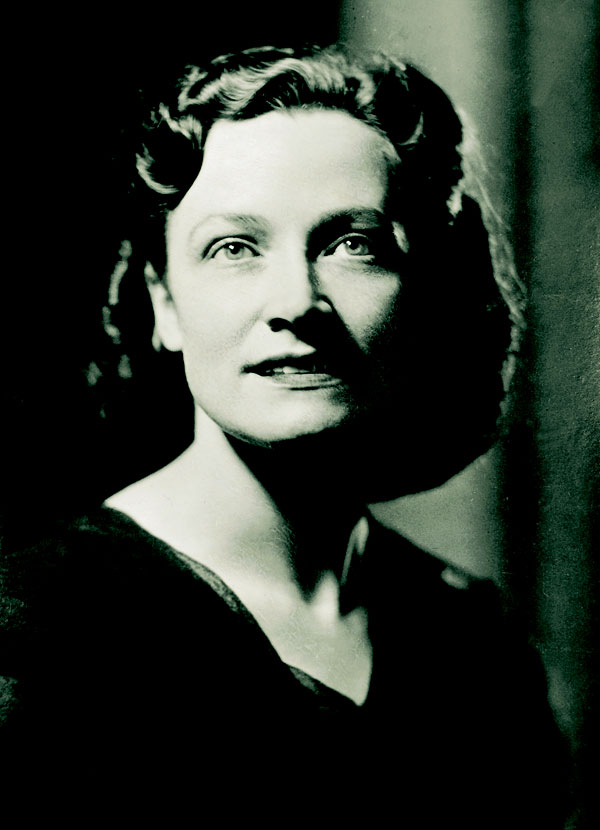
• Gustav Mahler: Song Cycles—Janet Baker/John Barbirolli. Few on record have sung the high peak in the opening line of "Ich atmet' einen linden Duft" (I breathed a gentle fragrance) and the close of "Ich bin der Welt abhanden gekommen" (I am lost to the world), both from the five Rückert-Lieder, with such incomparable lightness, sweetness, and beauty. If you purchase only one recording of Mahler lieder, make it this one. If you can take in two more versions of Rückert-Lieder, don't miss the duo of Ferrier and Bruno Walter—the artists who together revived appreciation for Mahler's vocal music after the Nazis had done all they could to suppress it—and Hunt Lieberson with Roger Vignoles on piano, live from Wigmore Hall. Mezzo Alice Coote's hi-rez version with orchestra is ear-opening.30 Beauty beyond words
• Ferrier's recordings of English song are a must. Every track on CD 9 of this set is remarkable for its quality of voice and beauty of spirit. No one else has recorded Ralph Vaughan Williams's "Silent Noon" as if it expressed every wonder in God's universe. More miracles await on CD 11.
But don't stop there: Ferrier's partnership with Bruno Walter in Brahms and Schubert at the 1947 Edinburgh Festival has rarely been equaled for its profundity. Listen to the weight of Brahms's "Von ewiger Liebe" (Eternal love), which was one of her specialties. (You can find other versions by her, and many of Brahms's Alto Rhapsody, if you search around.) Benjamin Britten frequently championed Ferrier—he wrote The Rape of Lucretia for her—and their few shared Schubert recordings, also on this album, are priceless. Her voice, often recorded close-miked, was incomparably beautiful, its spiritual reach far beyond that of most mortals. For more overtly demonstrative takes on English song, check out stereo recordings by baritone Bryn Terfel, Christopher Maltman, and Simon Keenlyside.
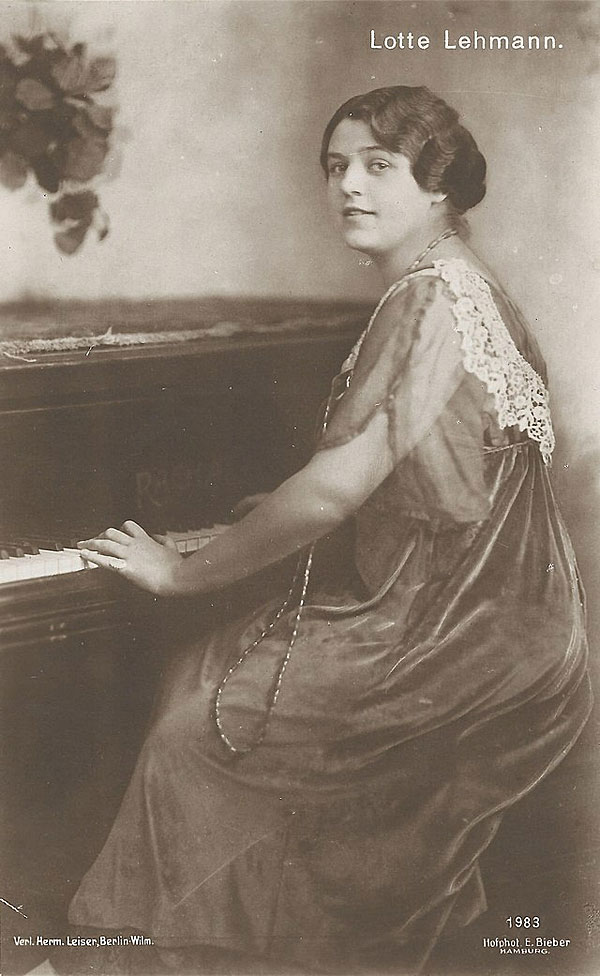
• Brahms: "Die Mainacht" (May Night)—Lotte Lehmann w. orchestra and two with Paul Ulanowsky, piano. Three versions of a great song by one of the most heartfelt German singers of the 20th century. Lehmann, who was Elisabeth Schumann's contemporary, friend, and once rival, had a one-of-a-kind voice that, despite its flaws—Schumann's had plenty as well—inspired the likes of Toscanini, Walter, Eric Korngold, and Richard Strauss. "Die Mainacht" finds her at her expressive best, first close to her peak and then as her voice began to age. Lehmann holds nothing back as she expresses the joy, pain, and longing in Brahms's heart. Once you hear her sing and explore the full range of her artistry, you'll either dismiss her as "old fashioned" or acknowledge that few singers were/are as naked in their expression, believing in their repertoire, and honest about who they are. Her Brahms, Strauss, Wagner, Korngold, Weber, and more are definitive.
• Schubert: Die schöne Müllerin (The Maid of the Mill—a 20-song cycle to poems by Wilhelm Müller), Winterreise (Winter's Journey—a 24-song cycle, again to poems by Müller), and Schwanengesang (Swan Song—a posthumously published collection of 14 songs). Together, these 58 songs say more about life, love, and the human condition than anything you will encounter in all the TED talks, Facebook memes, and tweets. How Schubert managed to imbue strophic songs with so much feeling is one of music's great miracles. Only consummate partnerships between singers and accompanists can lay bare the poetry and heart within every note.
Everyone points to the many versions of these three groupings by baritone Dietrich Fischer-Dieskau. Despite an unquestionably beautiful voice, which remained intact for the first 25 years of his career, I frequently find him too self-conscious. For Die schöne Müllerin, which was composed for tenor, look for the deeply expressive incomplete set by Aksel Schiøtz and the slightly later but very different (and complete) recording with Moore. For less "vintage" sound, check out the Hyperion Schubert Edition version sung by a fresh-voiced Ian Bostridge with Graham Johnson on piano (footnote 6), and the version by Mark Padmore. For Winterreise, seek out recordings by the incomparable bass-baritone Hans Hotter, baritone Gerhard Hüsch, Lotte Lehmann (footnote 7)—when she really gets going in the middle of the cycle, you may find yourself gasping for breath—contralto Nathalie Stutzmann, baritone Matthias Goerne, baritone Florian Boesch, and mezzo Joyce DiDonato. Goerne sings Winterreise as if narrated by someone mad, Boesch as if lost in clinical depression. There are so many ways to present this supreme test of the singer's art.
While the two cycles are best experienced as a whole, Schwanengesang, which Schubert may or may not have envisioned as a cycle or collection, can be enjoyed song by song.
For "Der Atlas" (Atlas), it's Hans Hotter without question. (Everything on his Icon collection is indispensable.) For "Der Doppelgänger," Lehmann's 1941 recording with Ulanowsky, either the live version or even better, the contemporaneous studio recording with Ulanowsky. For "Die Taubenpost" (The Carrier Pigeon), have a ball. I love Schumann and Goerne, but virtually everyone who can sing it credibly has recorded it. Elly Ameling's "Frühlingssehnsucht" from Schwanengesang is treasurable.
• Robert Schumann: Dichterliebe (A Poet's Love)—Lehmann and Walter. This beautiful and moving 16-song cycle is such a popular vocal test that in one season, the Bay Area saw performances by four different major baritones. But I learned every note from Lehmann's famed 1941 recording with Walter at the piano. The pianism is sketchy, but the age and sadness in the voice of a woman—Lehmann—who was forced to leave the Old World only to watch her new house in the hills of Santa Barbara burn to the ground is palpable. As with so much of Lehmann, the performance evokes the words of Richard Strauss: "Her singing moved the stars."
• Schubert: "Wandrers Nachtlied II" (Wanderer's Night Song)—Hotter with Michael Rauscheisen or Moore. The wisdom of the ages in under three minutes.
• Claude Debussy: Anything from Maggie Teyte, Jane Bathori, or others who sang with Debussy or his collaborators. All are very different and equally treasurable. Compare Bathori, who was born in 1877 and whose voice was in decline by 1928, with Teyte (born in 1888), who sang well through the mid-1940s, and try to figure out whose interpretations are "correct." The Teyte Debussy with Alfred Cortot from 1936 is irreplaceable.
Let's end on some sweet notes.
• Gabriel Fauré: "Les Roses d'Ispahan" (The Roses of Ispahan)—Teyte/Moore, Carolyn Sampson/Joseph Middleton, Kathleen Battle/James Levine, and the inimitable Victoria de los Angeles/Gonzalo Soriano. De los Angeles sings as if in a charmed world.
• Felix Mendelssohn: "Auf flügeln des Gesanges" (On Wings of Song)—Schumann with orchestra. Though I hate to resort to YouTube, this 1934 performance is so dew-kissed and magical as to make for a perfect close. If we may stray into operetta, try Oscar Strauss's "Sphären-Klänge" (Music of the Spheres), complete with whistling. Or, sticking to song, Strauss's "Ich Schwebe" (I Float), sung by the woman Strauss accompanied as he toured the United States in 1921. Incomparable.
Footnote 7: Lehmann was the first woman to record Winterreise. You can hear excerpts here.

Thank you Jason,
This art song piece was beautifully written, inspiring (I am listening to Sandrine Piau now), and well-sorted content-wise BRAVO!
your biggest fan,
herb

This was excellent. Thank you so much.

I can't seem to find an online reference to the disc, but I once had [and re-broadcast on KPFA, when I had a morning slot playing Classical music] an LP containing a documentary produced by Benjamin Britten and Peter Pears, read by Peter Pears, called something along the lines of "A singer is a Person", pointing out how the instrument of the human voice is also a person, so that much of the color, emotion and range of a singer are tightly bound to that person's history and personality. The instrument spoken of in the documentary happens to be Kathleen Ferrier. Both Britten and Pears worked extensively with Ferrier. I was tickled by Benjamin Britten's offhand remark of Ferrier being "Rather butch". During this time I was regularly reading Alison Bechdel's early work and recording the Woman's Philharmonic for rebroadcast, my immersion in Bay Area social life among classical musicians giving me a whole other angle on this contralto.
The portrait of Ferrier as "one of the boys" pointed to her earthiness, how much "she was a working girl, north of England way", first a telephone operator before entering a vocal contest on a dare, surprised to find herself hitting the bigtime, at least within the realm of Classical vocal recitals and opera. Her ascent was like a pre-echo of the Beatles story. I was completely obsessed with Ferrier's sound, emotion, poise, even though there was no way I could ever know her as a person. I'd be playing the Mahler song "Ich Bin der Welt Abhanden Gekommen" every day for the better part of a year around 1985/1986. Back in the late 1980s/early 1990s I'd be hunting records all over Berkeley, Oakland, San Francisco. As CDs flourished, the bins of Ameoba and Rasputin's filled up with old, mostly unplayed treasures. So I managed to own and listen to most of her recordings, including her exquisite collection of folk songs, many performed acapella. "Blow the Wind Southerly" managed to get aired many times when I had an early morning program at KPFA devoted to world music.
But now I'm down to a remastered Decca CD of Mahler's "Das Lied von der Erde" and the three Rückert-Lieder that were in the original 2 LP set on London. While I no longer have a turntable or any LPs, I would recommend tracking down "Das Lied Von Der Erde" (2×LP, Mono) London Records LL 625/626 for those that still do.

What wonderful memories. I was in the Bay Area, early 1980's and wore those record stores out every Friday. It was the OJC jazz reissues back then, for me. They were all of 3 bucks and what a wonder (can't believe those lp's go for as much as they do now). As for Kathleen it was and always will be her Das Linde Von der Erde (sp,I don't have German) with Bruno Walter around 1950 or so. "Erwige... E
rwige..." man, the Farewell was just all that. Gorgeous Decca mono sound if we're gonna do the audio thing and 300B's and horns or Tannoys or both if we must but does it really matter? You cannot harm Ferrier/ Walter. Thank you, kindly, for the exchange.

This article was a fantastic adventure; easily amongst my favorites. Your taste and your insights are really terrific. Thanks.

So glad this feature speaks to you.
jason